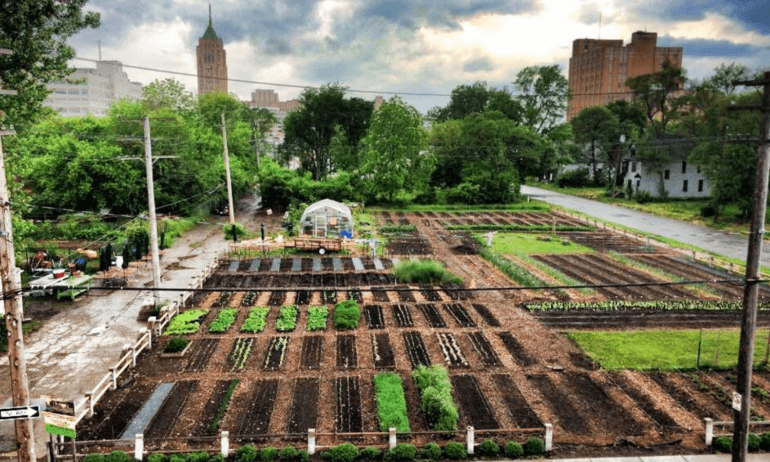Not known Details About City Blooming
Not known Details About City Blooming
Blog Article
City Blooming Can Be Fun For Anyone
Table of ContentsThe City Blooming DiariesTop Guidelines Of City BloomingThe 5-Second Trick For City BloomingThe Buzz on City BloomingThe Basic Principles Of City Blooming
Fascinated in growing food for sale in the City of Chicago? Below is a checklist of often asked questions pertaining to the guidelines and regulations that farmers ought to take into consideration when planning a city agriculture job.
The zoning modification does not modify any kind of other codes dealing with composting, building authorizations, purchasing or renting City owned building, company licenses or ecological contamination. There are existing codes that control these issues and they remain in complete impact and may apply to your task. Area yards are generally had or handled by public entities, public companies or community-based companies and kept by volunteers.
Urban farms grow food that is meant to be marketed, either on a nonprofit or for-profit basis. Due to their industrial objective, metropolitan farms call for a company permit. Yes. A neighborhood yard is allowed to market surplus produce that was expanded on site if the sales are accessory or subservient to the garden's primary objective defined over.
City Blooming for Beginners
The amount of garden compost product can not exceed 25 cubic lawns at any kind of given time according to the standards in 7-28-715 of the City's Municipal Code. Since the soil at a lot of brand-new yard sites needs modifying, garden compost, soil, timber chips, or other products can be acquired to create or improve the growing area.

If a structure permit is required after that the hoophouse will be considered an accessory structure. You can discover more regarding the building permit needs by getting in touch with the Division of Buildings. The 25,000-square-foot size limitation is planned to avoid a single community yard from controling a provided block or interfering with the block's existing household or industrial character.
The limitation does not relate to yards situated in Public Open Area (POS) districts. Can there be greater than one community garden that is 25,000 square feet on a single block? Yes. The dimension restriction relates he said to private yards, not to specific blocks. No. Fencing is not called for, nevertheless, gardens that have huge parking lot might be called for to install secure fencing or various other landscape design features.
What Does City Blooming Mean?
B1 & B2 districts call for that all industrial use activities be conducted indoors. Is fencing required for urban farms? Fences might be needed, along with landscaping and screening, for particular auto parking areas and exterior job or storage space locations depending on area and the particular activity taking location.
Urban farms require building authorizations and zoning authorizations prior to building and construction (eco-friendly practices). Other forms of city review might be needed depending on details structures, tasks, size, landscaping, licensing, public heath and stormwater administration concerns.
The Department of Service Matters and Consumer Protection can assist identify the certain kind of business license that's called for. Off road vehicle parking is needed for a lot of industrial jobs in Chicago. The required number of vehicle parking spaces is based on the number of workers working on site and not the square footage of the expanding area.
The Best Guide To City Blooming

Yes. An urban farm can offer compost material produced on site, nevertheless, the procedure needs to adhere to the laws in 7-28-715 of the Chicago Municipal Code. Yes. Aquaponic systems are enabled inside on city farms in many zoning districts. However, a zoning review and building authorization is called for in order to set up structures or systems and a company permit is called for as described over.
Up to 5 hives or nests of honey bees may be kept as an accessory use. Beekeepers have to sign up with the Illinois Division of Agriculture. For more info about the proposed zoning change you may contact the Division of Housing and Economic Advancement, Bureau of Planning and Zoning at 312.744.8563.
, which takes location in rural locations at the edge of suburban areas.
The Greatest Guide To City Blooming
It can entail an activity of organic cultivators, "foodies" and "locavores", who seek to form socials media founded on a common values of nature and neighborhood holism. These networks can establish by method of official institutional support, ending up being incorporated into regional community preparation as a "change community" activity for sustainable urban advancement.
The more straight access to fresh veggie, fruit, and meat items that may be understood via urban farming can improve food safety and food security while reducing food miles, causing reduced greenhouse gas exhausts, consequently adding to climate adjustment reduction. Several of the very first evidence of metropolitan agriculture originates from Mesopotamia.
Report this page